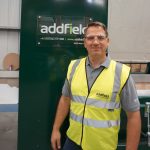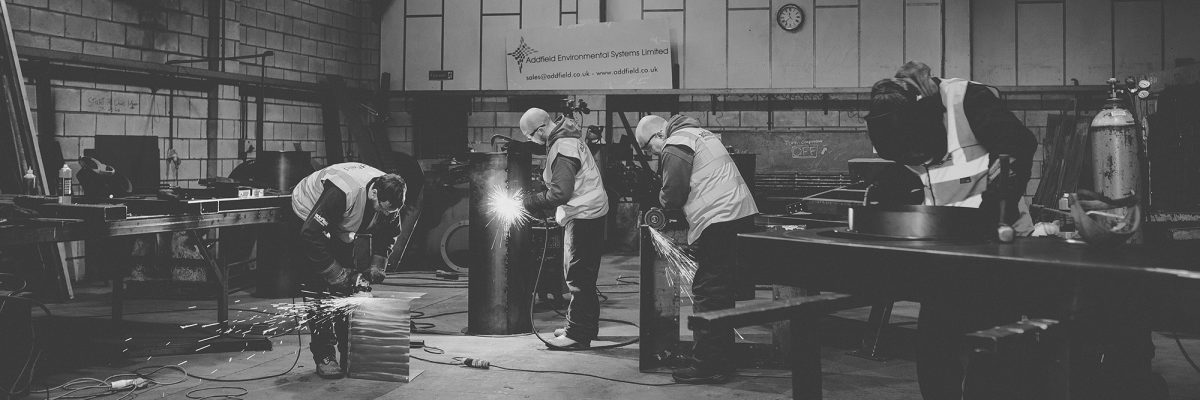Frequently Asked Questions - FAQs
At Addfield we have a range of solutions available to suit all of your incineration and cremation needs.
To help you discover the answers to your most frequently asked questions please choose from one of the categories below.

Medical Incinerators
Addfield Medical incinerators are utilised worldwide on six different continents by private hospitals, government primary health care services, medical waste management companies and by the vast majority of the world’s largest aid agencies globally. Our general range is split into two defined sectors. The MP range is ideally suited to be installed directly in hospitals, laboratories and care practices. Ranging from a chamber size of 100kg to 500kg the MP range is ideal for disposing of hospital waste. The large format GM range is ideally suited to the bulk disposal waste management companies and emergency use. Also with a range of machines, the GM Range is ideal for bulk waste generated from Aid Agencies and large hospitals. All of the Addfield medical incinerators have the option for continuous loading, filtration systems and continuous monitoring. For larger scale incineration disposal please visit our high capacity range. Speak to the experts today. Addfield….Simply Built Better
-
Will an incinerator stop the Coronavirus?
Disposing of infected waste will suitably destroy the virus rendering it unable to spread. However, an incinerator will only be able to play a part in stopping a viral pandemic such as the Coronavirus. It is a piece in the puzzle which includes appropriate social distancing, personal hygiene, waste disposal and waste tracking. Incineration should be a part of a robust biosecurity waste management system which when followed accordingly will save lives.
-
Can I catch Coronavirus from medical waste?
It is unconfirmed currently whether you can catch the Coronavirus from medical waste. However due to the nature of viral infections and the ability for the virus to live for many days on non-organic items. We can only assume that the risks of catching the coronavirus from contaminated waste is high. As such waste should only be handled by a capable professional wearing suitable personal protective equipment. And that appropriate disposal is essential, using correct waste bags, waste bins and PPE during the process of disposal by incineration would be the recommended approach for disposing of such waste.
-
Is Coronavirus waste safe?
Coronavirus waste should not be considered safe. We are still in the early stages of fully understanding the strength of the Coronavirus when it is outside of an infected person. We understand from some research that the virus can live on for up to 9 days on certain materials such as glass and metal. While we are not sure how likely it is to be able to catch the coronavirus from such contact, we know that medical waste in general must always be treated as hazardous and disposed of accordingly.
-
Once separated, is the waste then thrown in a bin?
Once the medical waste has been appropriately bagged and boxed it should then be suitably sorted to be disposed of. Multiple waste types should not be recombined through multiple bags sharing a bin.
Regulations confirm that medical waste must be kept separated by type. No mixing of bag type should occur. This reduces the risks of inappropriate disposal of waste and reduces the level of contact required to unsort mixed bags of waste once they reach their final destination.
You will most commonly find that Medical waste will be placed within specially marked ‘Yellow’ wheelie bins which are then issued with unique identification numbers which tracks the waste through to disposal and maintains full records for future reference.
These Identification numbers are especially important when the waste is not disposed of directly on site but is collected. Ensuring that a clear accountability journey is accessible including the exact date and location the waste was created and collected, to the time, date and location that the waste was incinerated. Ensuring clear traceability and avoiding possibility of tampering and illegal dumping.
-
What do hospitals do with their waste?
The majority of Hospitals worldwide take the safe disposal of medical waste highly seriously understanding the risks to the greater environment. However, there are unfortunately a series of barriers in place financially and through infrastructure that can stand in the way of this approach for some health care providers. The majority of developed countries will already have a solid system in place often including on site incineration facilities capable of destroying from several hundred kilograms to several tonnes of waste a day.
When a Hospital does not have an incinerator on site it will generally utilise the services of an approved waste collection agency which will collect and then dispose of the waste along with multiple additional sites in massive incineration facilities.
In some developing countries, it is more common to find smaller scale medical incinerators located at the hospitals for continuous disposal throughout the day.
Sadly, not every country has ready access to safe disposal systems, which can lead waste being disposed of on open ground or even burned in open fire pits. These approaches are highly dangerous and run the risks of contaminating the land, wildlife and residents surrounding such locations.
-
What sort of waste comes out of hospitals?
Hospital waste will generally fall into four main categories which is then further segmented by waste type (see Medical Waste Categorisation FAQ).
The most common and voluminous waste category is ‘Infectious’ waste, this includes protective clothing, such as masks, gowns and gloves, worn by doctors and nurses. Infectious Waste will be bagged prior to appropriate disposal by incineration.
Following on from that you will find ‘Sharps’ waste, most commonly made up of needles and syringes these are placed into containers and can be disposed of via incineration. Incineration is not designed to destroy metal however it will heat it to such a level as to fully sterilise the metals enabling them to be recycled.
‘Redundant’ medical waste is the next type and will include expired pharmaceuticals and similar products for disposal. Once again to prevent environmental damage these should not be disposed of via landfill but incineration Redundant medicine itself falls into two further categories: hazardous, which contains cytotoxic and cytostatic drugs; and non-hazardous, which doesn’t contain these chemicals.
Finally, you will have ‘Anatomical’ waste this encompasses body parts, organs and surgical waste.
Each category will be placed into its corresponding container type for appropriate disposal, most commonly this will by an appropriate medical level incinerator.
-
Can you throw away medical waste?
No, you should never simply throw medical waste away. Medical waste takes many forms and almost all of them carry potential risks of spreading disease and infection. Medical waste fits into a selection of categories (see Medical Waste Categorisation FAQ). Not all medical waste requires incineration however it does not mean it can be disposed of with general waste headed for landfill. To protect the environment from biohazards appropriate disposal methods should be followed for each waste type.
-
What are the risks from Coronavirus waste?
As the Coronavirus (also known as COVID19) is a virus which is commonly described as a parasite which is much smaller that bacteria. These microorganisms will thrive within a host body, different viruses have different abilities to last in the open environment. It is recognised that the Coronavirus can stay infectious for several days on multiple very common materials.
Multiple separate research activities have been carried out with findings suggesting that the Coronavirus can remain active on Plastics, Glass and Stainless Steel for between seventy-two hours and nine days. This greatly increases your risks of contamination even without direct contact with another person.
As such this makes waste used in the treatment of patients with the Coronavirus potentially highly contagious and requiring immediate appropriate disposal via a suitable medical incinerator
-
How to destroy Coronavirus waste?
During the current global Coronavirus pandemic, it is to be expected that there will be a dramatic increase in the amount of medical waste being produced. As more people become ill and require medical treatment this will generate more mixed and hazardous medical waste.
Coronavirus waste must be incinerated to safely remove the risks to the environment from cross-contamination. To safely destroy the risks associated with the Coronavirus waste a suitable specialised medical incinerator must be used.
-
Why buy an Addfield machine ?
Addfield are leaders in the Medical Incineration industry due to our commitment to innovation, design and quality.
All of our machines have been purpose-designed for the particular requirements of operating a medical waste incineration facility. Compared to some manufacturers that simply rebrand their other machines.
Our machines are designed to match and grow your operation with options to suit you. Whether you are just starting out managing your own waste disposal or are looking to expand.
We have more than 35 years of heritage in the industry enabling us to have developed the widest range of machines.
Our quality and service have helped us to win multiple awards and we are trusted by several of the world’s largest international aid agencies, NGO’s and health care providers to supply their machines.
We keep our doors open to visitors and make all our machines by hand in the UK enabling you to see exactly what you are buying and at every stage of the process.
We share your success as we are confident once you use an Addfield machine you will not want to use any other and when your time comes to upgrade we will be there to help your growth.
-
What Medical Incinerator do I need?
First and foremost are facility needs to size a machine according to the amount of waste it is processing.
As a waste management company, or pharmacy this maybe expressed in ‘kg’ ‘m3’ or number of 1100/770/240 litre bins collected in one day.
As a hospital this value again maybe expressed in physical terms or in the number of beds a specific hospital may have. Having this information we can estimate how much waste will be generated per occupied bed. This value is typically between 0.3kg-0.8kg, but can vary depending on geographic location and waste segregation practices in place.
Ideally in your estimation you should allow for some extra capacity should you waste loads increase in future.
Secondly the type of medical waste you are looking to dispose of will play a major factor if how much a specific machine will process. See ‘How does the Calorific Value of the waste determine the incineration process’ below
-
Medical Waste Categorisation
Human Anatomical Waste (Human tissues, organs, body parts).
- Category: 1.
- Storage Method: Plastic yellow bag.
- Treatment Method/Disposal Type: Incineration utilising Addfield C and MP Series.
Animal Waste (Animal tissues, organs, body parts, carcasses, fluid, blood).- Category: 2.
- Storage Method: Plastic yellow bag.
- Treatment Method/Disposal Type: Incineration utilising Addfield Agriculture Series.
Microbiology & Biotechnology Waste (Laboratory cultures, stocks, specimens, cell culture, devices used for transfer)- Category: 3.
- Storage Method: Disinfected container/Plastic red bag.
- Treatment Method/Disposal Type: Addfield C and MP series.
Waste Sharps (Needles, syringes, scalpels blades, glass).- Category: 4.
- Storage: Plastic red bag.
- Treatment Method/Disposal Type: Addfield C and MP series.
Discarded Medicine and Cytotoxic Drugs (Outdated, contaminated or discarded medicines).- Category: 5.
- Storage: Plastic yellow bag.
- Treatment Method/Disposal Type: Addfield C series.
Solid Waste (Contaminated with blood or fluids – dressing, cotton, plaster casts, bedding).- Category: 6.
- Storage: Disinfected container/Plastic yellow bag.
- Treatment Method/Disposal Type: Addfield C series.
Infectious Solid Waste (Hand gloves, tubing, catheters, glass).- Category: 7.
- Storage: Plastic red bag.
- Treatment Method/Disposal Type: Chemical Treatment, Autoclaving, or Microwaving. Mutilation or shredding. Recycling.
Liquid Waste (Laboratory washing, cleaning, disinfecting).- Category: 8.
- Treatment Method/Disposal Type: Chemical Treatment. Discharge into drain.
Incineration Ash.- Category: 9.
- Treatment Method/Disposal Type: Municipal landfill.
Chemical Waste.- Category: 10.
- Storage: Puncture proof blue container.
- Treatment Method/Disposal Type: Chemical disinfection. Discharge into drain. Solid disposal in secured landfill.
-
Why have a secondary after chamber?
The primary filtration method on all Addfield incinerators and cremators is the secondary after chamber. The resulting incineration flue gas is oxidised in the secondary after chamber. To ensure complete and thorough oxidisation the flue gas must remain in the after chamber for a minimum of two seconds the W.H.O. states “If hazardous wastes with a content of more than 1% halogenated organic substances, expressed as chlorine, are incinerated, the temperature has to be raised to at least 1100°C” in the secondary after chamber.
Guidelines for Safe Disposal of Unwanted Pharmaceuticals in and after Emergencies, WHO/EDM/PAR/99, World Health Organisation. WHO
Further stages of the filtration are also available, and can be found here: https://addfield.wpengine.com/filtration/ These systems won’t be right for every waste stream, the below gives a generalised overview of systems however please consult Addfield for further advice, as every waste stream will be different.
Temperature Collapse Kits:
To prevent dioxin and furan reformation
De-Nox Kits: [De Nox Kit Link]
Typically only required on high capacity diesel plants to remove or reduce NOx emissions.
Cyclone Scrubber: [Cyclone Link]
A cost effective scrubber system, with typically up to 50-60% removal ratio on some parameters
Wet Scrubber System: [Wet Scrubber Link]
A highly effective removal system, that achieves a high particular removal ratio whilst preventing dioxin reformation.
Ceramic Filtration Systems: [Ceramic Filtration Link]
One of the most effective removal system on the market, with up to a 97% removal ratio of certain parameters, however requires a larger area for implementation.
Acid Scrubbers: [Acid Scrubber Link]
A bolt on system that to remove acid gasses such as SO2, HCL with the use of hydrated lime.
-
What are the filtration methods?
There are various stages of the filtration on incineration systems, some are compulsory other maybe recommended depending on the waste stream and throughput.
-
What about medical incinerator emissions?
Medical waste incinerators have to hit specific emission limits, these limits will vary depending on the location of which a machine is installed. For example emission limits in the UK, far exceed those of Asia. All of our machines are built to exceed even the strictest standards as a baseline, as such when a machine is purchased from Addfield, you should feel confident in the knowledge that you are buying an incinerator of the highest of standards from a trusted manufacturer.
Our machines have been emission tested to the highest of standards:
-
What should I look for in a medical incinerator?
As soon as any medical incinerator is used with medical waste it is considered a bio hazard because of the nature of the material it deals with. As such it is extremely important to choose a machine that is robust and reliable long term. A thick steel casing will ensure long term sustainability as will an efficient design. A modular refractory design such as monolithics or refractory firebricks will ensure long term maintenance of the machine whilst further extending its life cycle. Efficient design and thick refractory linings of above 150mm will ensure minimum heat stress and reduced fuel consumption.



